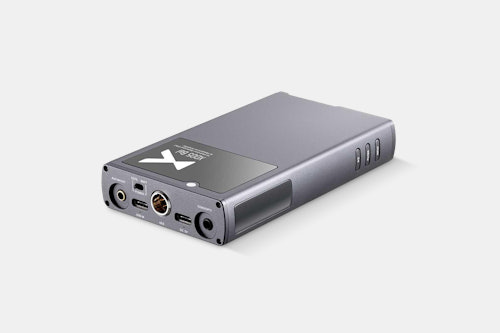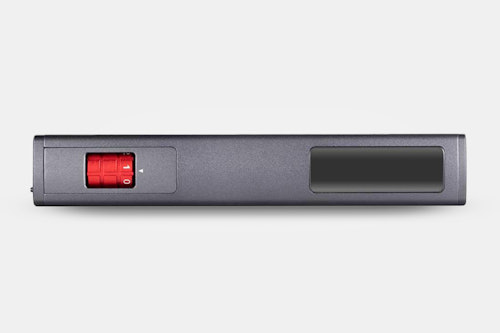Click to view our Accessibility Statement or contact us with accessibility-related questions







xDuoo XD-05 Bal Balanced DAC/Amp
xDuoo XD-05 Bal Balanced DAC/Amp
bookmark_border
Where's the price?
To negotiate the best possible price for our customers, we agree to hide prices prior to logging in.
302 requests
·
12 Sold
Product Description
Portable, powerful, and equipped with a fully balanced output, the XD-05 Bal DAC/amp from xDuoo makes a comprehensive cornerstone to any audio setup. Handling conversion, dual ES9038Q2M DAC chips provide detailed sound with ultra-low distortion Read More
Want to know something about this product or how to use it?
Ask the community!
Ask the community!
Sort by: Newest
keyboard_arrow_downgrush
1
Feb 10, 2021
Excuse me if I'm stupid, but why when I stream uncompressed songs from Tidal and Deezer does the display still say 44.1 khz? I'm using USB input from my PC. Shouldn't it read higher? Thanks for your help.
ShoobdaLoob
16
Feb 12, 2021
You need to check your source file that is playing on tidal and make sure tidal is set on wasapi output on exclusive mode. This will let the program stream directly to the dac at native sampling frequency. If the file is 44.1 it should stay at 44.1, if the file is 192 khz it should say 192khz
JDM_Beebsta
55
Feb 10, 2021
I do not use either Tidal nor Deezer so I have no clue what to they mean by uncrompressed quality. 44.1khz is uncompressed quality because is exactly CD quality. If you think the streaming from Tidal and/or Deezer is of higher quality than 44.1khz, you must look into the settings of the device. I presume you use a Windows based machine and checking the before mentioned settings can be done via > right click the volume control in tray > Open Sound settings > Choose your output device > select the DAC from the dropdown > Device properties > Additional device properties (upper right) > Advanced > Select 32bit. 96khz > OK everything.
(Edited)

jgillingham
182
Feb 12, 2021
JDM_BeebstaYou're confusing sample rate and bit rate. The CD sample rate is 44.1 kHz and there are 16 audio bits per sample, so the bit rate of one channel of uncompressed CD-quality audio is 705.6 kHz. If you throw away bits to compress the signal, the sample rate doesn't change, only the bit rate.
JDM_Beebsta
55
Feb 13, 2021
jgillinghamYou are wrong on so many levels.
- If you compress an audio file, you doing that by chopping out of frequency. This is the reasons why mp3 files have anything between 9600hz and 44.khz. You do not throw away bits, you throw away frequencies over/under a certain threshold.
- The bitrate is mesured in kbps, not khz
- I have not mentioned anything about throwing "bits". I was just explaining what he has to check as part of Windows settings to ensure there are no limitations at OS level.
(Edited)

jgillingham
182
Feb 14, 2021
JDM_BeebstaI'll respond to your last point first:
3 - Yes, I agree. I have absolutely no problem with your advice about Windows settings.
2 - Yes, I was careless: kbps = kilobits per second, and kHz = kiloHertz = kilocycles per second.
1 - Yes, the MP3 encoder throws away tones in the original recording. This reduces the bit rate, but not the sample rate. The sample rate for CD is 44.1 kHz and MP3 cannot change this. The bit rate for CD is 705.6 kbps for one channel or 1411.2 kbps for stereo. The standard bit rates for stereo MP3 at a 44.1 kHz sample rate are 32 kbps for the lowest quality and 320 kbps for the best MP3 quality.
If the DAC displays 44.1 kHz, that is a sample rate and will not be changed by the MP3 encoder. The bit rate for MP3 at 44.1 kHz could be any one of the following values: 32, 40, 48, 56, 64, 80, 96, 112, 128, 160, 192, 224, 256 or 320 kbps. Bigger bit rate = less compression.

Lickumms
0
Aug 20, 2021
On average, how long does the tattery last on this and how long does it take to recharge?
freylee82
2
Aug 26, 2021
It takes me about 5 to 6hrs to charge it full. Battery lasts me about 6 to 8hrs when using LDAC, longer when using USB (maybe 12hrs), and much longer when using Aux-in. There's a switch for you to select power source (internal battery or the dedicated USB-C power port), so you could be using as a USB DAC on 1 port and drawing power from the other USB-C port.



